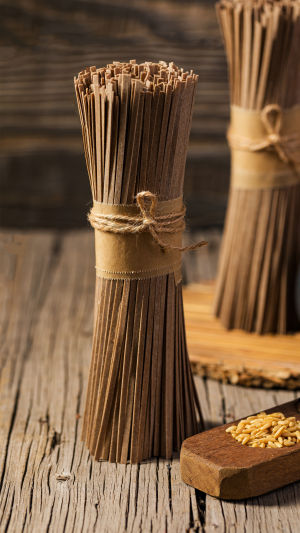Noodles, as a widely consumed culinary delight, boast a history steeped in tradition and a multitude of preparation methods found both in China and across the globe.
This versatile foodstuff, primarily crafted from flour, undergoes rolling, cutting, or pressing before being expertly paired with various soups, sauces, vegetables, eggs, and an array of other delectable ingredients.
Noodles, with their diverse shapes, textures, and flavors found throughout different regions and countries, have rightfully earned their place as a beloved culinary treasure.
1. History and Origin
The storied history of noodles stretches back to approximately 2000 BC in China, firmly establishing them as one of the world's oldest dietary staples. These earliest incarnations of noodles typically consisted of a mixture of wheat flour and water, skillfully processed into the thin strips that we know today.
These noodles were then meticulously dried, preserving them for future use. The cradle of noodle invention rests in the northern reaches of China, where the climate is conducive to wheat cultivation, and wheat noodles were the earliest incarnation.
In China, noodle preparation is deeply intertwined with the country's rich cultural tapestry. Noodles grace the tables during traditional Chinese festivals and celebrations, including the Spring Festival and Mid-Autumn Festival.
Considered a symbol of longevity and happiness, noodles often take center stage at weddings and birthday celebrations.
Over time, noodles embarked on a journey of culinary exploration, spreading to various parts of Asia such as Japan, Korea, and Vietnam.
In each region, they adapted and evolved, giving rise to unique noodle varieties and preparation methods, each infused with the local palate and cultural nuances. Meanwhile, noodles also made their way to Europe, America, and other continents, each region adding its twist to this versatile food.
2. Noodle Preparation
Ingredient Preparation: Generally, the primary ingredients for crafting noodles include flour, water, and salt. Different noodle types may call for distinct flour types, such as wheat flour, buckwheat flour, rice flour, and more. The ingredients must be expertly blended in precise proportions.
Dough Formation: The flour, water, and salt are meticulously mixed to create a supple dough. This phase demands a certain level of expertise to ensure the dough achieves the desired elasticity and chewiness.
Resting the Dough: The dough is then placed in a warm, cozy spot to rest for a period, allowing the gluten to relax. This step proves vital for the subsequent rolling and cutting processes.
Noodle Crafting: The rested dough is skillfully rolled out into thin sheets, and the noodles are then expertly fashioned into their desired shapes using a pasta machine, or other specialized tools.
Cooking: Noodles are cooked in simmering water or through a preferred method, with various noodle types often necessitating distinct cooking times and techniques.
Ingredients and Seasonings: Once cooked, noodles are commonly paired with an assortment of toppings and seasonings, such as soup, soy sauce, vegetables, meats, seafood, eggs, and more.
Noodles, boasting a rich history and diverse cultural significance across the globe, offer a tantalizing glimpse into the world of culinary artistry.
Whether savoring a bowl of savory Chinese ramen, indulging in the timeless Italian classic of spaghetti, or relishing the comforting warmth of Japanese udon, each type of noodle serves as a testament to the boundless creativity and ingenuity of global cuisine.





